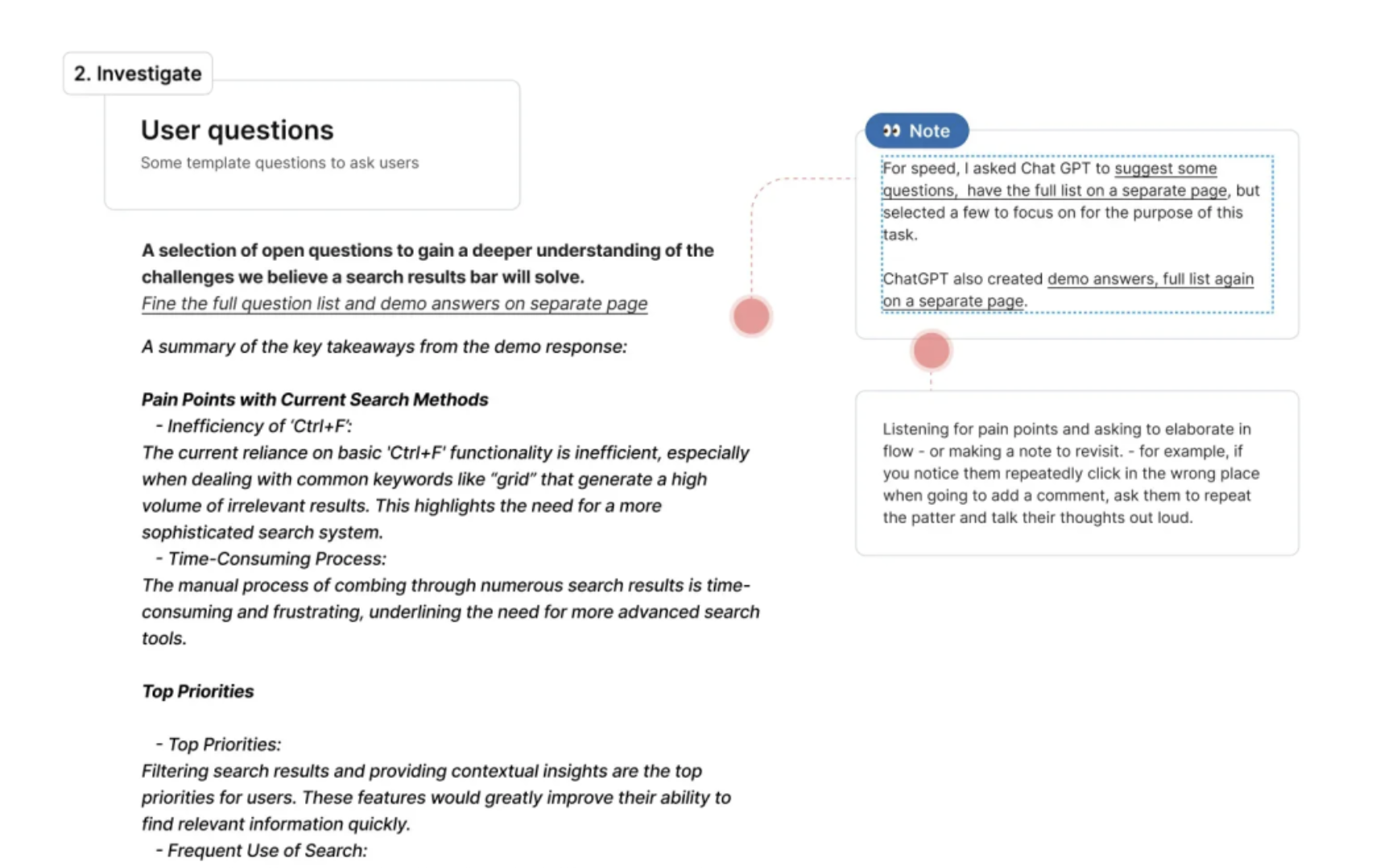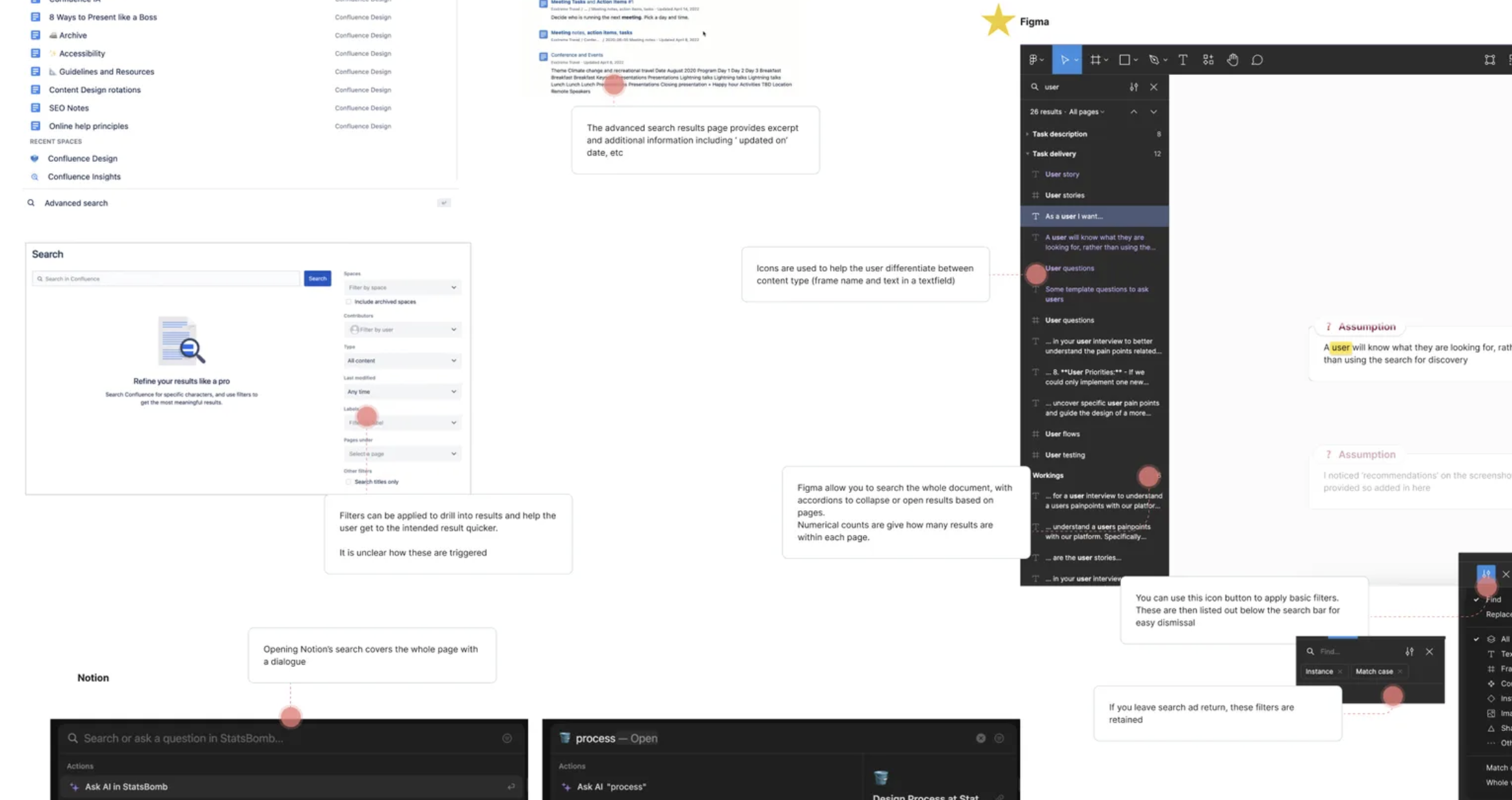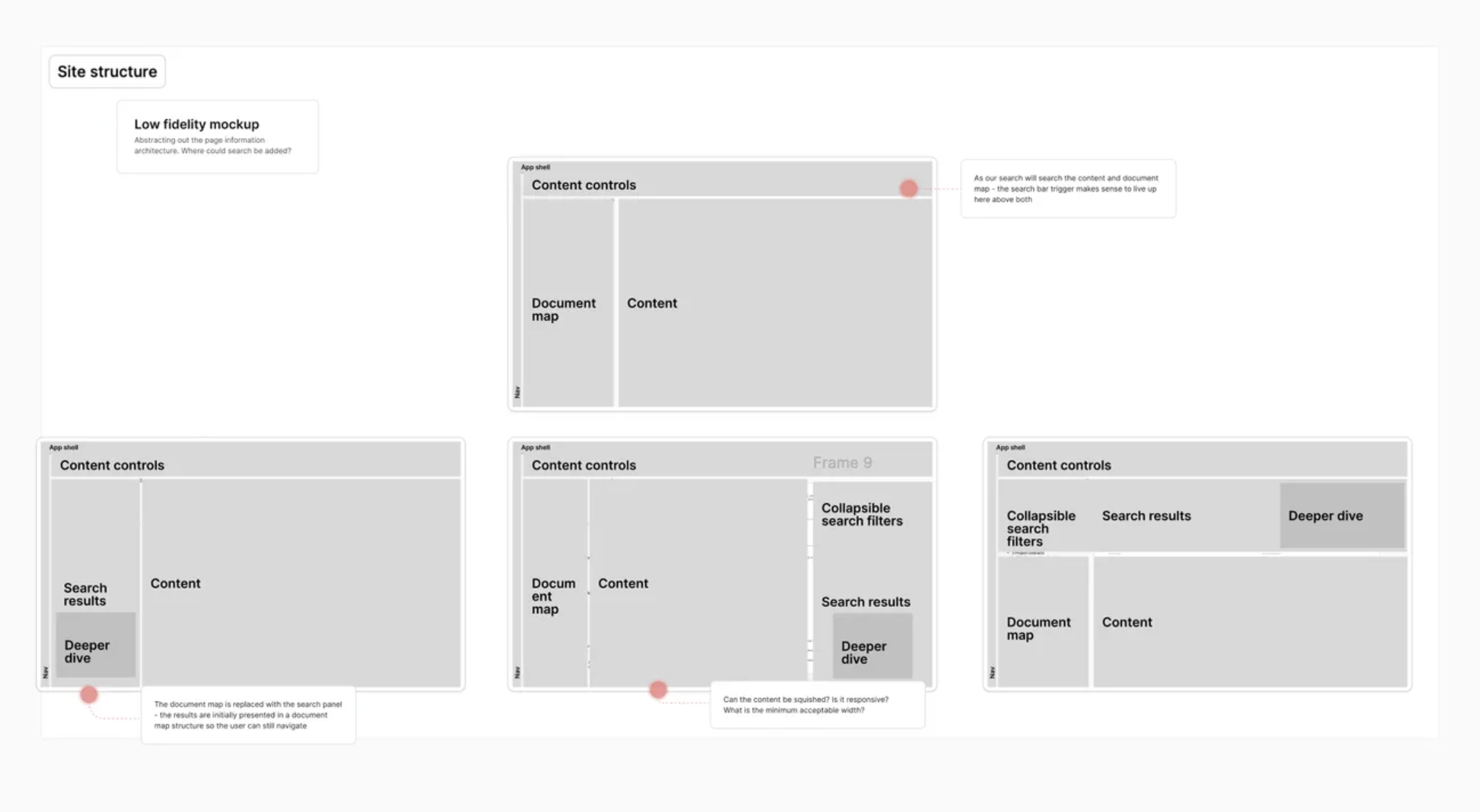Approach
How I Approach UX Challenges:
A Hypothetical Search Feature for Due Diligence
A UX Process Demonstration
1. Introduction
In the fast-paced world of UX design, sometimes we’re asked to solve complex problems quickly, without the luxury of extensive user research or development time. This case study showcases a hypothetical task I explored, improving search functionality within a due diligence software platform, completed in just two hours.
While this wasn’t a real project, the exercise demonstrates my approach to tackling ambiguous challenges, validating assumptions rapidly, and outlining a user-centred process. My goal is to share how disciplined UX thinking and methodical exploration can lay a strong foundation for impactful design solutions, even under tight constraints.
2. Problem Overview
Due diligence projects on the LiveDiligence platform involve extensive risk reviews, detailed collaborative documents analysing hundreds of potential risks associated with renewable energy investments. These reviews often result in reports exceeding 200 pages.
Given the sheer volume of information, users face significant challenges locating specific risk details quickly and efficiently. The goal of this task was to explore how adding search functionality could help users navigate these complex documents and find relevant information faster.
3. Initial Exploration and Assumptions
In a real project, initial exploration would involve gathering insights directly from customers through interviews, feedback from sales or customer success teams, focus groups, or data from analytics tools. For this hypothetical task, I worked with available documentation and made explicit any assumptions I identified.
To guide the exploration, I used AI-generated questions to simulate user inquiries and help uncover potential pain points. This approach allowed me to quickly frame the problem space and prepare for ideation, despite the limited timeframe.

4. Research and Benchmarking
To understand how similar challenges have been addressed, I reviewed tools with overlapping search and navigation functionalities. This benchmarking helped identify common patterns and effective solutions that could be adapted for the due diligence context.
By analysing competitors and related software, I gained insights into layout options, search filtering, and user flow considerations. These findings informed the early conception phase and ensured ideas were grounded in real-world examples.

5. Ideation and Early Concepting
Next, I mapped out user journeys to understand how users might interact with the search functionality while navigating the extensive risk review documents. Tools like Miro were used to visualize these journeys and gather feedback from product and engineering teams, helping to identify technical constraints and opportunities.
Low fidelity mockups were created using simple grey boxes to abstract the interface and encourage open-minded thinking. I experimented with different site structures and content placements to assess how the new search feature might impact screen layout and user flow.

6. Validation Approach
In a real project, I would test and validate the search concepts by building interactive prototypes and defining success metrics in collaboration with the product team. Metrics might include task completion time and success rate of finding information, tracked over time to ensure continued use.
Tools such as Maze would be used to run asynchronous usability tests, allowing users to interact with prototypes and provide feedback. This iterative testing ensures the solution truly meets user needs and improves navigation of complex documents.
7. Reflection and Next Steps
This exercise reinforced the value of a structured UX process, even when working under tight time constraints and with limited data. Rapid assumption validation, early benchmarking, and collaborative ideation helped form a solid foundation for further development.
Moving forward, I would apply this approach to real projects by engaging with actual users, iterating on prototypes based on feedback, and working closely with cross-functional teams to deliver a refined, user-centred search feature.
Additionally, my experience designing accessible, scalable design systems, such as the one I developed at StatsBomb would support creating a consistent and intuitive interface for this functionality.
8. Conclusion
This hypothetical task demonstrates how disciplined UX thinking and a user-centred process can drive meaningful solutions, even in fast-paced, exploratory contexts. By combining research, ideation, and validation planning, it is possible to tackle complex problems and lay the groundwork for impactful design.
If you’d like to discuss how these methods could apply to your challenges or projects, feel free to reach out.
